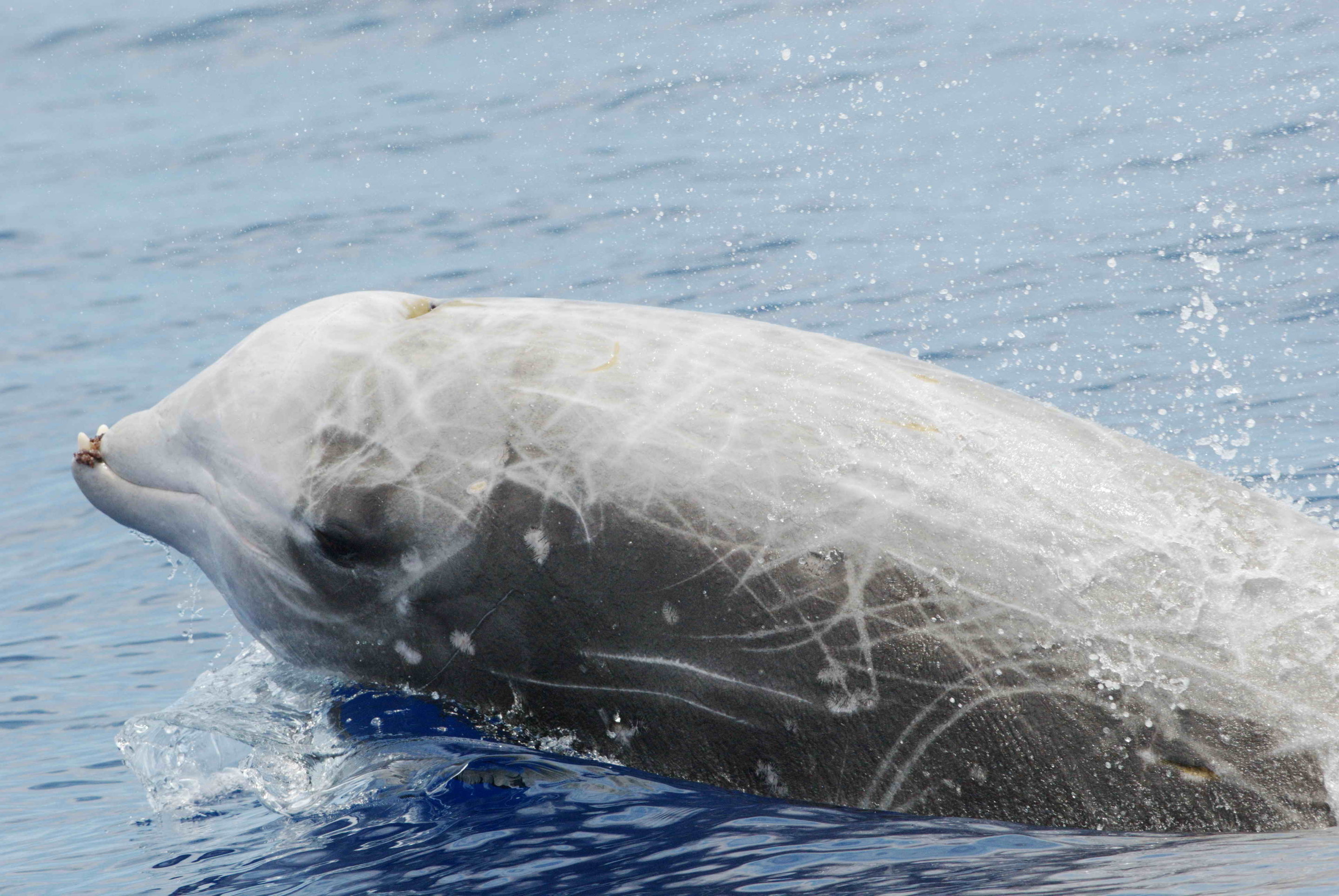Physical Characteristics

Spade-toothed beaked whales stand out due to their unique physical attributes. Their most distinctive feature is their spade-shaped teeth, which play a crucial role in their feeding habits. These whales possess a relatively large body size, reaching lengths of up to 5.5 meters and weighing around 2 tons. Their coloration is typically a dark gray or black on the back, gradually transitioning to a lighter shade on the underside.
Spade-shaped Teeth
The spade-toothed beaked whales’ spade-shaped teeth are an adaptation that enables them to capture and feed on deep-sea fish. The teeth are arranged in a unique manner, with two pairs located in the lower jaw and one pair in the upper jaw. The spade-like shape of these teeth allows the whales to effectively grasp and hold onto their prey.
Habitat and Distribution

Spade toothed beaked whales – Spade-toothed beaked whales are elusive deep-sea dwellers that primarily inhabit the vast oceanic realms. Their preferred habitats lie within the sunless depths of the ocean, often exceeding 3,000 meters.
Their global distribution spans across major ocean basins, including the North Atlantic, North Pacific, and Southern Oceans. Within these regions, they frequent areas with steep underwater slopes, canyons, and seamounts. These topographic features provide shelter, feeding grounds, and potential breeding sites.
Factors Influencing Habitat Preferences, Spade toothed beaked whales
The habitat preferences of spade-toothed beaked whales are influenced by several factors:
- Prey Availability: These whales primarily feed on deep-sea squid and fish. Areas with high concentrations of these prey species attract and sustain populations of spade-toothed beaked whales.
- Oceanographic Features: Whales are known to associate with specific water masses, such as those with particular temperature, salinity, and nutrient levels. These conditions may influence prey distribution and foraging success.
- Underwater Topography: Submarine canyons, slopes, and seamounts create unique habitats that provide shelter, feeding grounds, and potential breeding sites. The complex terrain may also aid in predator avoidance.
Behavior and Social Structure: Spade Toothed Beaked Whales

Spade-toothed beaked whales are social animals that live in small groups of up to 10 individuals. These groups are typically led by a dominant male, and they have a strong social structure. Communication is essential for maintaining the group’s cohesion, and they use a variety of vocalizations to communicate with each other.
Feeding Habits
Spade-toothed beaked whales are deep-diving predators that feed primarily on squid and fish. They use their echolocation to find prey, and they can dive to depths of up to 1,000 meters in search of food. They are ambush predators, and they often lie in wait for their prey before attacking.
Threats and Conservation Concerns
Spade-toothed beaked whales are not currently considered to be an endangered species, but they are facing a number of threats, including habitat loss, pollution, and bycatch in fishing gear. Climate change is also a major concern, as it is causing the oceans to warm and acidify, which could have a negative impact on the whale’s food supply.
Spade-toothed beaked whales are fascinating creatures, with their unique dental features. But did you know that they have something in common with tennis legend Rafael Nadal ? Both are known for their relentless determination and unwavering focus. Just as Nadal dominates the clay courts, spade-toothed beaked whales excel in the deep ocean, navigating through challenges with grace and resilience.
Spade-toothed beaked whales are deep-diving creatures that can hold their breath for over an hour. They’re also known for their distinctive spade-shaped teeth. But did you know that these whales are also affected by the Biden Covid pandemic? That’s right, even the whales are feeling the effects of the virus.
Scientists are still studying how the pandemic is affecting these animals, but they believe that it could have a significant impact on their population.